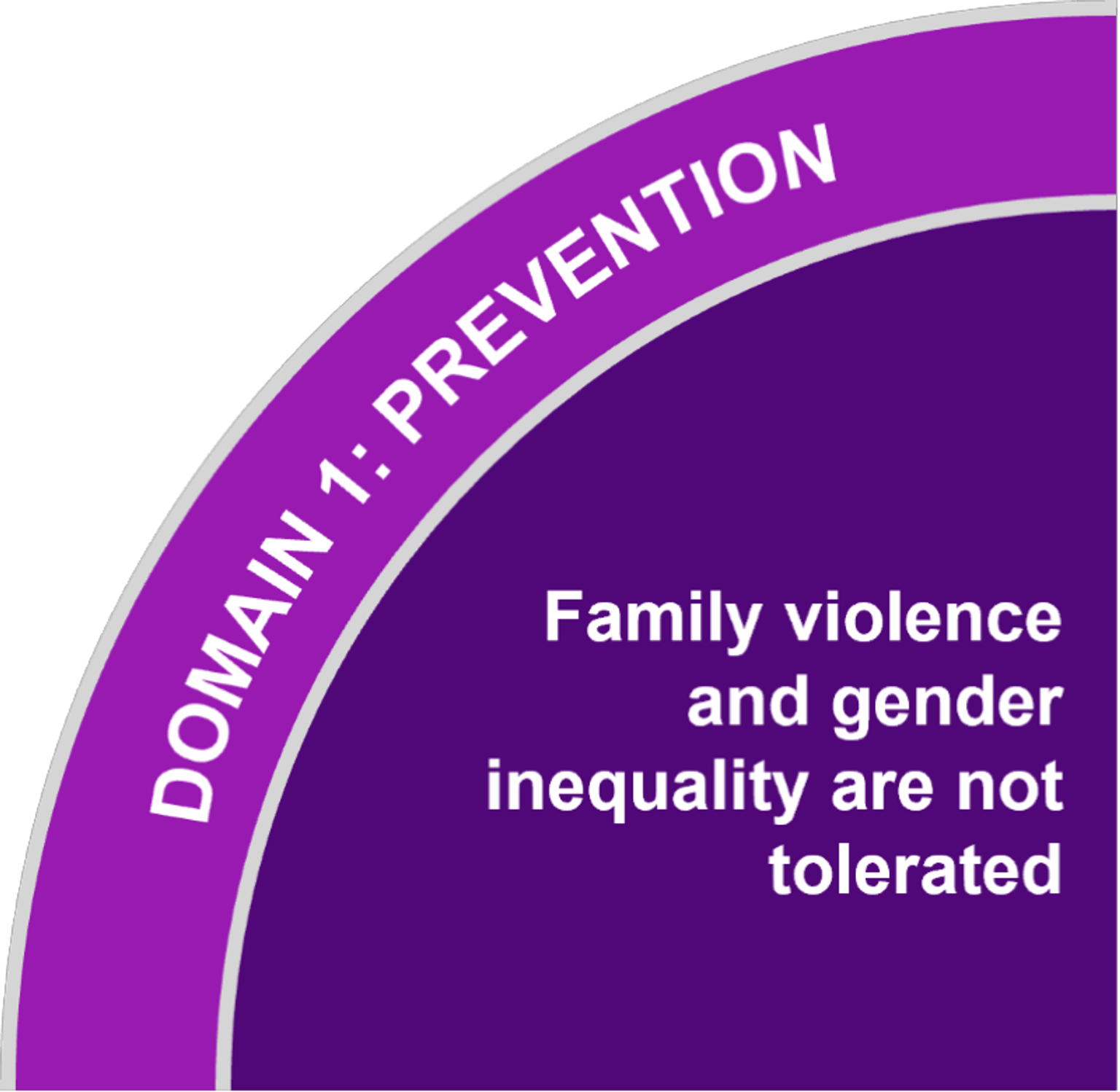Most violence, including family violence, is committed by men.1 This violence is grounded in gender inequality. It is driven by men’s control of decision-making, limits to women’s independence, rigid gender stereotypes, cultures of masculinity that emphasise aggression, dominance and control, and the condoning of violence against women.2
Primary prevention focuses on stopping family violence and violence against women before it starts. This requires coordinated action across multiple settings that challenge the attitudes, social norms, and behaviours that perpetuate gender inequality and condone violence towards women.
Victoria’s approach to primary prevention is set out in Free from violence: Victoria’s strategy to prevent family violence. It was launched in 2017. The strategy guides our engagement with Victorians of all ages and from all communities to prevent family violence in all the places where they live, work, learn and socialise.
We do this work in partnership with local councils, women’s health services, maternal and child health services, multicultural, youth and community organisations, sporting clubs, educational institutions, settlement services and workplaces. Respect Victoria plays a critical role as Victoria’s dedicated organisation for the prevention of family violence and violence against women.
Prevention outcomes we are working towards
- Family violence and gender inequality are not tolerated.
- Victorians hold attitudes and beliefs that reject gender inequality and family violence.
- Victorians actively challenge attitudes and behaviours that enable violence.
- Victorian homes, organisations and communities are safe and inclusive.
- All Victorians live and practise confident and respectful relationships.
Strengthening our data
To address the challenges with long-term, population-level outcomes, we are developing short- and medium-term indicators and measures for our prevention work. These are milestones on the pathway to driving down family violence and violence against women in Victoria. They will help us know we are on track to achieving our long-term outcomes.
Currently, we rely heavily on population-level data to understand changes in the Victorian community’s understanding of, and attitudes about, violence against women. We are working to identify additional sources of data from programs and initiatives delivered in the community.
Program-level measures are currently being piloted through evaluations of primary prevention programs to test whether they are fit-for-purpose, and ensure there is consistency in outcomes data collection, analysis and reporting. Including this additional data from evaluations will enable us to better understand both the individual and collective impact of prevention programs across Victoria.
The next steps for the ‘Prevention’ domain include confirming the feasibility of data sources, establishing data-sharing agreements with data custodians, developing data collection tools and systems for reporting data, and integrating these into programs and projects. Implementation will be supported by guidance materials.
Data in this report
The primary prevention data in this report is drawn from two population-level representative surveys:
- the National Community Attitudes Towards Violence Against Women Survey (NCAS), administered by Australia’s National Research Organisation for Women’s Safety (ANROWS)
- the Personal Safety Survey (PSS), administered by the Australian Bureau of Statistics (ABS).
These data sources allow us to monitor attitudes over time. This includes community understanding of violence against women, attitudes towards this violence and towards gender equality, and the prevalence of violence in Victoria.
They also enable the monitoring of societal norms and practices in relation to gender equality and the drivers of violence against women, as well as the proportion of women in Victoria who experience sexism, sexual harassment and gender discrimination.
While there are four long-term outcomes in the ‘Prevention’ domain, only three have data available. The outcome, ‘Victorian homes, organisations and communities are safe and inclusive’ does not have data to report against the measure ‘Proportion of women who feel safe walking home at night’. The Australian Bureau of Statistics has not released Victorian data for this measure from the Personal Safety Survey.
Footnotes
1 Our Watch 2019, Men in focus: summary of evidence in review. https://media-cdn.ourwatch.org.au/wp-content/uploads/sites/2/2019/11/06…
2 Our Watch 2018, Change the story: a shared framework for the primary prevention of violence against women in Australia, 2nd ed. https://www.ourwatch.org.au/resource/change-the-story-a-shared-framewor…
Updated
